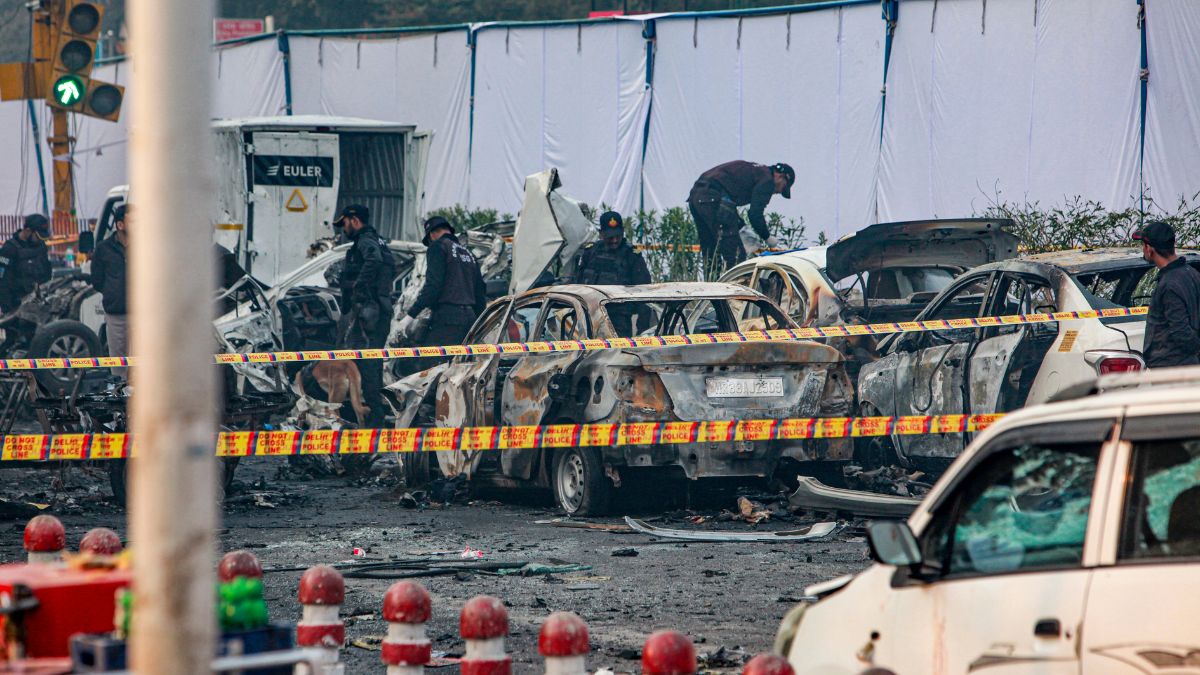JeM stamp on Red Fort attack? Terror group’s tactics of homegrown fidayeen, radicalisation in Kashmir
 Charred remains of vehicles at a cordoned off area following a blast that occurred near Red Fort Metro Station on Monday | PTI
Charred remains of vehicles at a cordoned off area following a blast that occurred near Red Fort Metro Station on Monday | PTI
The National Investigation Agency (NIA) has described the Red Fort terror attack as the handiwork of a ‘suicide’ bomber who conspired with the Kashmir valley-based associates to assemble a vehicle-borne Improvised Explosive Device (IED) designed to cause maximum damage and claim lives.
The NIA’s first arrest- Amir Rashid Ali, in whose name the car involved in the attack was registered- hails from Pampore in Jammu and Kashmir. He came to Delhi to facilitate the purchase of the car that was ultimately turned into an IED and detonated by the alleged suicide bomber Umar Un Nabi.
The return of a homegrown fidayeen module to carry out the IED attack points towards at least two new patterns in the changing terror landscape of Jammu and Kashmir. Cross-border terror outfits like the Jaish-e-Mohammed are trying to revive militancy through radicalisation as infiltration routes become harder, especially after Operation Sindoor and drone reconnaissance on the India-Pakistan border.
Over the decades as winters approached, Jammu and Kashmir and mountain passes closed due to heavy snowfall, Pakistan-based terror groups, like the Jaish-e-Mohammed, sneaked in as many terror operatives on foot. While some were meant to carry out swift attacks on security forces, others carried arms, explosives, and got assimilated in pockets where foot soldiers and sympathisers provided them shelter. “These sleeper cells have mushroomed over decades and are activated when their cross-border handlers direct them to specific targets to unleash terror,” said a senior security official.
Officials say infiltration of terrorists from across the border is almost negligible- it drew a blank in recent months- and terror outfits have activated sleeper cells while choosing online methods to radicalise men like Umar to execute the attack. This is where the role of educated youth, being called the white collar terror ecosystem, comes in as sleuths unravel the trail of radicalised doctors from Srinagar to Haryana’s Faridabad and Uttar Pradesh’s Saharanpur.
There are two parts to the Red Fort terror conspiracy, say sources, the first being the Jaish posters that came up in Nowgam area on the outskirts of Srinagar, which appear to be the handiwork of a less sophisticated module or foot soldiers of Jaish and Ansar Gazwat ul-Hind, while the other was the alleged masterminds who had access to the internet in other cities where they were not only being radicalised but also studying bomb-making techniques.
Sources said understanding the links between the two with hard evidence will be important to understand how the radicalised terror operatives, without any physical training in camps across the border, were trained to execute the attack. At the same time, the big question is also how the explosive material was procured, stored, and transported across the interstate borders before it reached the spot where the blast was triggered. The obfuscation by terror groups like the Jaish and Ansar Ghazwat ul-Hind is posing a bigger challenge for investigating agencies, as they do not get detected till the time they are tasked to carry out a terror operation.
The complex terror ecosystem poses another challenge, as the foot soldiers may have no direct connection to the educated radicals, as each arm functions independently without the knowledge of the others at times, said a security official. This differs from a group of infiltrators, who map out their routes and eventually link up with the locals. The fidayeens of Jaish, however, are not new, as the 2019 Pulwama terror attack and the 2001 Parliament attack were also the handiwork of its suicide bombers in explosive-laden vehicles.
India